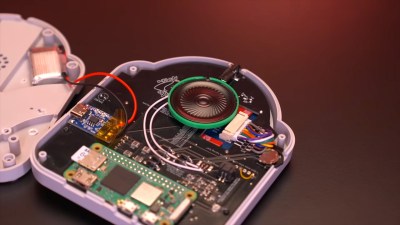[Zac] of Zac Builds has a shameful secret: he, a fully grown man, plays video games. Shocking, we know, but such people do exist in our society. After being rightfully laughed out of the family living room, [Zac] relocated his indecent activities to his office, but he knew that was not enough. Someone might enter, might see his secret shame: his PlayStation 5. He decided the only solution was to tear the game console apart, and rebuild it inside of his desk.
All sarcasm aside, it’s hard to argue that [Zac]’s handmade wooden desk doesn’t look better than the stock PS5, even if you’re not one of the people who disliked Sony’s styling this generation. The desk also contains his PC, a project we seem to have somehow missed; the two machines live in adjacent drawers.
While aesthetics are a big motivator behind this case mod, [Zac] also takes the time to improve on Sony’s work: the noisy stock fan is replaced by three silent-running Noctua case fans; the easy-to-confuse power and eject buttons are relocated and differentiated; and the Blu-ray drive gets a proper affordance so he’ll never miss the slot again. An NVMe SSD finishes off the upgrades.
Aside from the woodworking to create the drawer, this project relies mostly on 3D printing for custom mounts and baffles to hold the PS5’s parts and direct airflow where it needs to go. This was made much, much easier for [Zac] via the use of a 3D scanner. If you haven’t used one, this project demonstrates how handy they can be — and also some of the limitations, as the structured-light device (a Creality Raptor) had trouble with the shinier parts of the build. Dealing with that trouble still saved [Zac] a lot of time and effort compared to measuring everything.
While we missed [Zac]’s desk build, we’ve seen his work before: everything from a modernized iPod to wooden sound diffusion panels.






 In the spirit of
In the spirit of 











